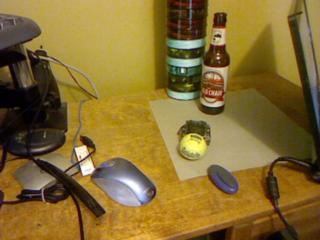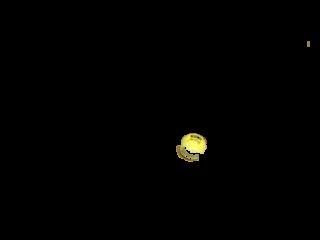 |
 |
| Can you tell which item was added to the scene? | How about now? |
Pretty much a no brainer right? Which is good, because that's what we have to work with - a "no brain" computer. This is the next step in the process too.
Tracking is working easily by setting a focus point. But, what should it focus on? What gets our interest ?
One thing which usually gets our visual attention is movement, and this may include something "new" added to the scene.
Now that we have found something exciting and different in the scene, we will want the computer to learn as much as possible regarding this new object.
- What color is it ?
- How big is it ?
- What shape is it ?
- How far away and what direction is it in?
- Have we seen it before ?
- And the all important - "What word(s) can describes it?"
If we can have the computer answer some of these questions then other possible relationship question might be within our grasp.
- What does it do ?
- Where do you find it?
- What parts does it have ?
I plan to try to model the Cortex memory like this. The Cortex has to be designed to be aware of when its moving. This is important since when the camera moves, everything becomes the "foreground"

A Tennis Ball! What did I
A Tennis Ball! What did I win? Seriously, can you differentiate between foreground movement and single object tracked that causes the camera to move? This is getting interesting...
You win the product of
You win the product of million and millions of years of evolution ! Don't you feel lucky, .. you should !
All "Tracking" at this point is not done on an object basis. The Lucas Kanade Optical tracking point is done on a corner. Corner of what you ask ? The corner of anything - it has no concept of an object, nor foreground and background.
LK Points often fail being decent tracking points when they are on an edge of an object, although an edge of an object is usually a high contrast area :P
The strategy is :
Now the object can be found, and tracked while moving, and found again (possibly) if lost.